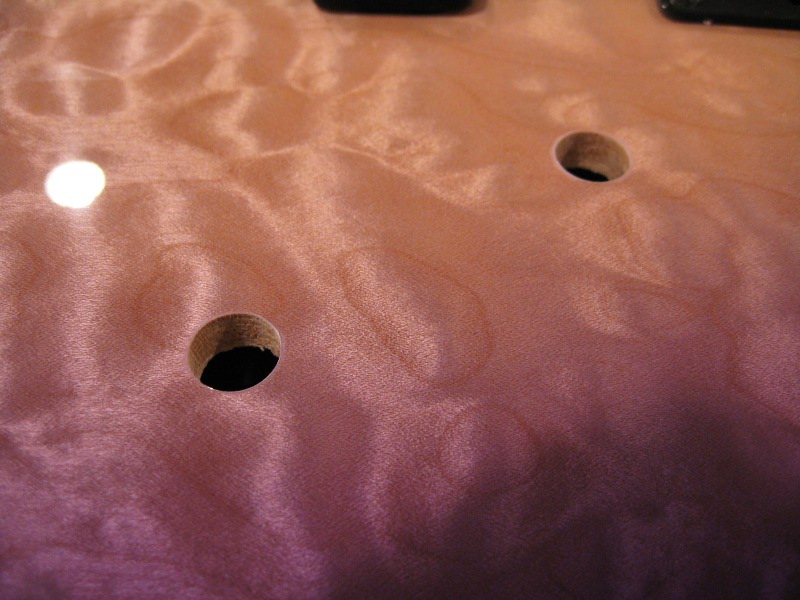The subject does come up a lot, and there are a few heroic steps you can take mitigate it, but paint chipping from drilling and other operations is nowhere near the problem it's often made out to be. Not that it doesn't happen; it does. But, it's not a "problem"
per se.
The reason is that few guitars are finished in lacquer these days except by DIY types. The vast majority are done in acrylic or polyurethane, neither of which are as brittle as lacquer and so are less prone to chipping. Not that they won't, but you don't get those big fingernail-sized hunks flying off like you might with lacquer. They also don't develop running stress cracks like lacquer does. What you will more likely see after drilling/cutting modern finishes is an edge that resembles hacksaw teeth. Jagged, but small and difficult to see unless you look close, and unlikely to grow.
Of course, we don't want to see even tiny imperfections in our finishes, at least not at first (some guys will deliberately destroy perfectly good finishes to make some kind of statement, but that's another discussion). So, the vast majority of pieces and parts that are going to mount in or on holes in the necks and bodies of guitars either have flanges or washers around their edges (like tuners, pots, switches, jacks), or will cover their mounting holes altogether (like pickguards, jackplates). So, you won't see any rough edges. They'll be covered up and out of harm's way.
But, if you're concerned about it, you can always put masking tape over the holes before you drill them. It doesn't work, but it makes some guys feel better. What tape over holes is actually good for is giving you an easy-to-mark surface so you can locate your holes better and there's less chance of the drill skating off-mark. But, even that is rarely necessary.
Sometimes, holes are "repaired" after the fact by running a shallow countersink on them. Again, not necessary for hidden holes, but it makes some guys feel better. Not sure why; it's simply using a larger cutter on the same hole that was just made with a smaller cutter.
On larger holes like you need for pots/switches/jacks, twist drills can sometimes do a lotta damge to the finish, but it's not the drill doing the damage to the finish so much as the wood chunks it's pulling back from the surface because it's chewing away so violently. In those cases, it's better to use a different type of drill such as a brad point or Forstner bit.
Brad point bit
Forstner bit
They slice the outer diameter of the hole
before they remove the inside material, so the wood fibers don't pull back in chunks that take finish with them. End result is a nice, relatively clean hole like I got for these pot holes...
Those were actually drilled by hand using a portable drill motor and a 3/8" Forstner bit. Forstner bits are typically more expensive, but often do a better job. Also, while not necessary in this case, sometimes it's handy that they make flat-bottomed holes. So, they're my preferred solution.






